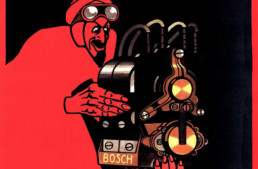Automakers have recently announced detailed plans to electrify large portions of their fleet, but electric vehicles are nothing new. And neither are the innovators driving clean-power technology. Marcus Hays is among these EV veterans. He first became interested in alternative energy while pursuing his degree in Transportation Design at the ArtCenter College of Design in Pasadena, California. Marcus cut his teeth on EV technology while working on a design project dubbed the “21st Century Taxicab,” an alternative-energy public transit vehicle. Marcus’ work caught the attention of a group launching an advanced transportation hatchery called CALSTART. “I was the sixth company to join the hatchery in 1994. By 1998, there were 200 companies in the incubator. The technologies developed inside the hatchery contributed to pieces of different projects, like the Tesla Roadster. I met Lee Iacocca there, and he and I collaborated phenomenally. I also worked with Paul McCready, whose brainchild was the first mass-produced electric car.” Marcus is currently the Co-CEO of ORBIS, a California-based company hell-bent on reinventing wheels — car wheels.










